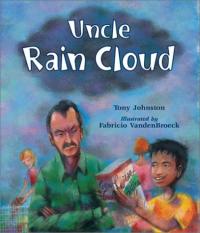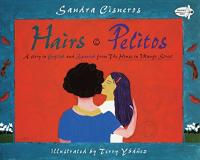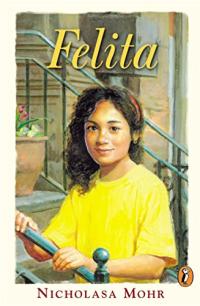
“Just as warm and upbeat as How Tía Lola Came to (Visit) Stay (2001), the second book about Miguel and Juanita’s aunt, who comes from the Dominican Republic to live with the kids’ family in Vermont, is written in the same lively, playful style. Language is a central focus as Tía Lola volunteers to teach Spanish in the local elementary school. The story builds to a tense climax when her visa is about to expire, and the whole town rallies for her to stay. Readers will enjoy both the messages and the humor in Tía’s wry, wise sayings.” — Booklist
How Tia Lola Learned to Teach

Firefly Summer

Confetti Girl

The Case of the Pen Gone Missing: A Mickey Rangel Mystery

Araña Volume 1: Heart of the Spider

An Island Like You

Any Small Goodness: A Novel of the <em>Barrio</em>

“Drawing on his own experience as a child refugee from Cuba, Flores-Galbis offers a gripping historical novel about children who were evacuated from Cuba to the U.S. during Operation Pedro Pan in 1961. Julian, a young Cuban boy, experiences the violent revolution and watches mobs throw out his family’s furniture and move into their home. For his safety, his parents send him to a refugee camp in Miami, but life there is no sweet haven…(T)his is a seldom-told refugee story that will move readers.” — Booklist
90 Miles to Havana

…And Now Miguel

How 33 Chilean miners were rescued from a copper mine dominated the media in 2010. It is recounted here using primary sources, scientific explanations, and a riveting narrative.
Trapped: How the World Rescued 33 Miners from 2,000 Feet Below the Chilean Desert

In 2008, Lee Berger and his 9-year old son discovered two well preserved fossils, ancestors of modern man. The process as much as the ripples the discovery created remind readers that information is dynamic.
The Skull in the Rock: How a Scientist, a Boy, and Google Earth Opened a New Window on Human Origins

The world was changed forever in 1492. The impact of explorers and exploration is examined and placed in a broader context with complete documentation and resources noted.
The World Made New: Why the Age of Exploration Happened and How It Changed the World

No matter how much is known, there’s always more to learn. In a fascinating re-examination of Stonehenge and recent discoveries, readers are introduced to new interpretations and thinking.
If Stones Could Speak: Unlocking the Secrets of Stonehenge

Another fictionalized account which brings to life westward expansion. As with …California Gold Rush, fact is made distinct from fiction.
How to Get Rich on the Oregon Trail

A fictionalized journal of a prospector brings the Gold Rush to life for readers. Fact and fiction are clearly differentiated while enlivening the history.
How to Get Rich in the California Gold Rush: An Adventurer’s Guide to the Fabulous Riches Discovered in 1848

The search for the man who beat a steam engine unfolds in words and pictures. The mystery in history is sure to intrigue readers.
Ain’t Nothing but a Man: My Quest to Find the Real John Henry

Note: While the scene in which Carlos translates at a school conference is realistic, we strongly discourage schools from using students as translators for parent conferences.
Uncle Rain Cloud

Hairs/Pelitos

We Are Cousins

Carolina’s Gift: A Story of Peru

Product Description: Every Saturday, Maria Lili looks forward to making chicken sancocho with her grandparents. But one Saturday they discover that there is nothing in the house except eggs. Mama Ana has a plan, though, and taking the eggs with her, she invites Maria Lili to come to the market. Bold, cheerful watercolors evoke the busy atmosphere of the village markets of Central and South America. Reading Rainbow Book.
Saturday Sancocho

Zapato Power: Freddie Ramos Zooms to the Rescue (Book 3)

Felita

Product Description: For María Isabel Salazar López, the hardest thing about being the new girl in school is that the teacher doesn’t call her by her real name. “We already have two Marías in this class,” says her teacher. “Why don’t we call you Mary instead?” But María Isabel has been named for her Papá’s mother and for Chabela, her beloved Puerto Rican grandmother. Can she find a way to make her teacher see that if she loses her name, she’s lost the most important part of herself?
